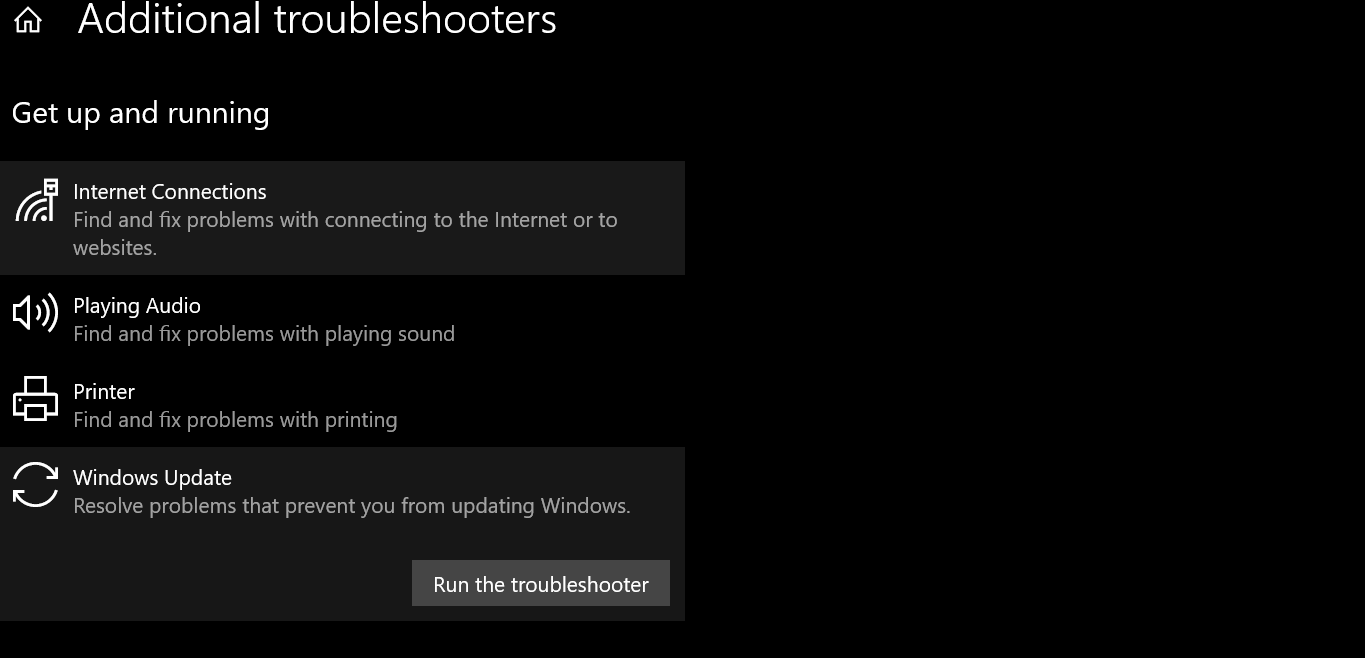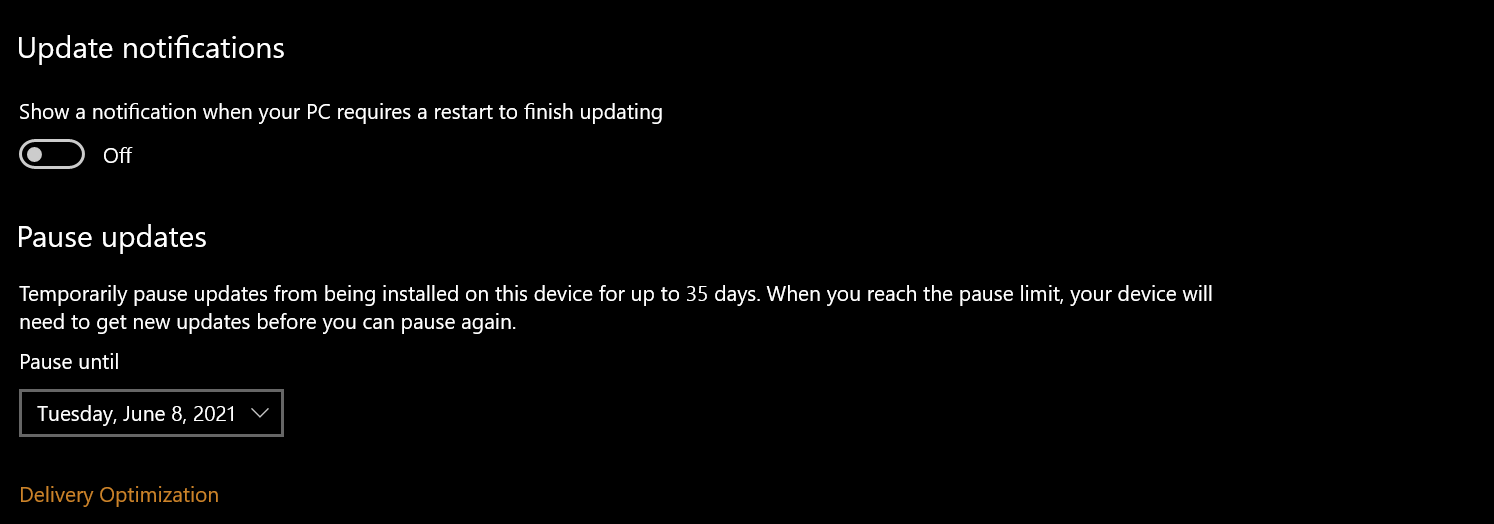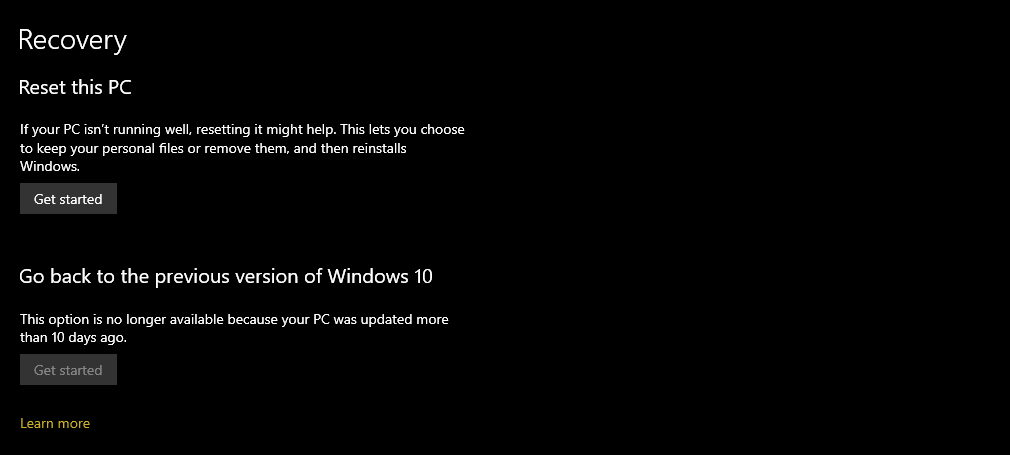Windows 10 Delete Update and Try Again
Windows Updates can fail for a variety of reasons. From low disk space to driver conflicts, it can take you hours to determine what went wrong. So instead of trying to nail down the cause, it is better to clean up your PC and restart the update.
Let's see how you can prepare your PC after a failed Windows Update.
The first thing that you need to do is to run the Windows Update Troubleshooter. This tool comes with every copy of Windows 10 and attempts to find issues regarding Windows Update.
Similarly, it can also repair broken files and processes to try running the update again safely.
- To run the troubleshooter, press Windows key + S, type Troubleshoot settings, and press Enter.
- Once in the Troubleshoot settings panel, press Additional troubleshooters, click on Windows Update, and hit Run the troubleshooter.

Next, wait for the troubleshooter to find problems and apply fixes that the troubleshooter suggests. Otherwise, skip them if you've already tried the suggested fixes.
Once the troubleshooter stops running, move on to the next step.
2. Run Deployment Image Servicing and Management
The next thing that you need to do is scan and fix corrupt system components. Corrupt system components are one of the major reasons why updates fail, so it is better to find and fix them before attempting to update again.
To start the process, fire up a Command Prompt window by typing Command Prompt in the windows search bar, right-clicking, and pressing Run as administrator.
In the Command Prompt window, type DISM /online /cleanup-image /restorehealth and press enter. Upon pressing enter, DISM will start scanning Windows Component Store files for corruption and will try to fix the corrupted components.

Running a DISM scan before moving on to the System File Checker (SFC) scan is important because SFC relies on the Windows Component Store of the Windows image that you are running. If the component store is itself corrupt, SFC won't work.
So, run DISM to make sure that when you need to run SFC, you can do so without any issues.
Once DISM finishes running, you can move on.
3. Run a System File Checker Scan
Where DISM scans and fixes system components, System File Checker (SFC) scans Windows system files that are corrupt and tries to fix them by replacing them with stable versions from the Windows component store.
The process for running SFC is almost the same as DISM. Just like before, fire up a Command Prompt window with administrative privileges. Then, type SFC /scannow and press enter.

Let SFC do its thing and once it finishes up, restart your PC.
4. Pause Windows Updates
After finding and fixing any component and file errors, the next thing to do is delete old update files.
Windows Updates are a mess which is why most people aren't upgrading to newer Windows 10 versions. One of the reasons they are such a mess is that different updates can create conflicts that lead to failed updates.
A simple fix to resolve these conflicts is to delete already downloaded updates and rerun the process.
One way to delete downloaded updates is to pause and then un-pause the updates. Windows will delete the downloaded update files if you pause automatic updates.
- To do this, pressWindows key + I to openSettings, then head toUpdate & Security >Windows Updates >Advanced options.
- Under Pause updates, in the Advanced options, select a date that you want to pause the updates for. For example, select a date for the next day.
- After selecting the date, restart your PC. Windows will resume the updates after one day and will wipe away all the downloaded updates.

Once the updates resume, you can re-download the files and try again.
5. Delete Old Data Windows Updates Data
While the "Pause/Un-Pause" method works well to delete already downloaded updates, it is not a foolproof way to delete old update files. A better way to do this is to delete the SoftwareDistribution folder.
The SoftwareDistribution folder contains cached updates. Windows Update Service uses this directory to distribute software, hence the name. Thus, to delete this folder, you need to disable background services first.
Although you can manually disable background services, a quicker and safer way to do this is to boot into Safe mode. So, follow these instructions to boot into Safe Mode.
When Windows Safe Mode boots, open File Explorer and type SoftwareDistribution in the search bar in the top right corner. Once the folder pops up, delete it.
Finally, restart the PC (not in safe mode) and download the updates.
6. Resolve Driver Conflicts
Windows Updates can also fail due to driver conflicts. So, you should clear up these conflicts after a failed update.
You can resolve most driver conflicts by updating drivers to the latest version. If updating doesn't work, you can also try deleting and re-installing the different versions.
Clearing up these driver conflicts goes a long way in ensuring that you have a smooth updating experience the next time you run Windows Update.
7. Manually Roll Back Windows Updates
In the event of a failed Windows Update, Component-Based Servicing (CBS) attempts to roll back the update. While it works fine, for the most part, this rollback can fail.
If the rollback fails and you can boot into the OS, you can uninstall the update from inside the Settings panel.
On the other hand, if the update fails and you can't boot into the OS, you need to boot into the Windows Recovery Environment.
In the first case where you can boot into Windows, navigate to Settings > Updates & Security and then choose Recovery from the left panel.
Next, in the Recovery panel, click on Get started and follow the directions to roll back the changes.

If you can't boot into Windows after a failed update, boot into the Windows Recovery Environment. Afterward, navigate to Troubleshoot > Advanced options > Uninstall Updates > Uninstall the latest feature update.
After uninstalling the feature updates, try booting into Windows. If you can boot successfully, run the Windows Update again.
However, if you still can't boot, the only option left is to manually install a fresh copy of Windows from a bootable medium.
Windows Updates Fail, but You Can Always Try Again
There are a plethora of things that can go wrong when Windows tries to update. So, the fear of things breaking can keep you from updating regularly.
Fortunately, you can undo almost everything that a Windows Update changes. From clearing up cached files to rolling back updates manually, prepping Windows for another go at updating is not difficult.
In short, you don't need to sweat about updating. Just go for it.
cobbsahmearallood.blogspot.com
Source: https://www.makeuseof.com/clean-up-your-pc-after-failed-windows-update/

Post a Comment for "Windows 10 Delete Update and Try Again"